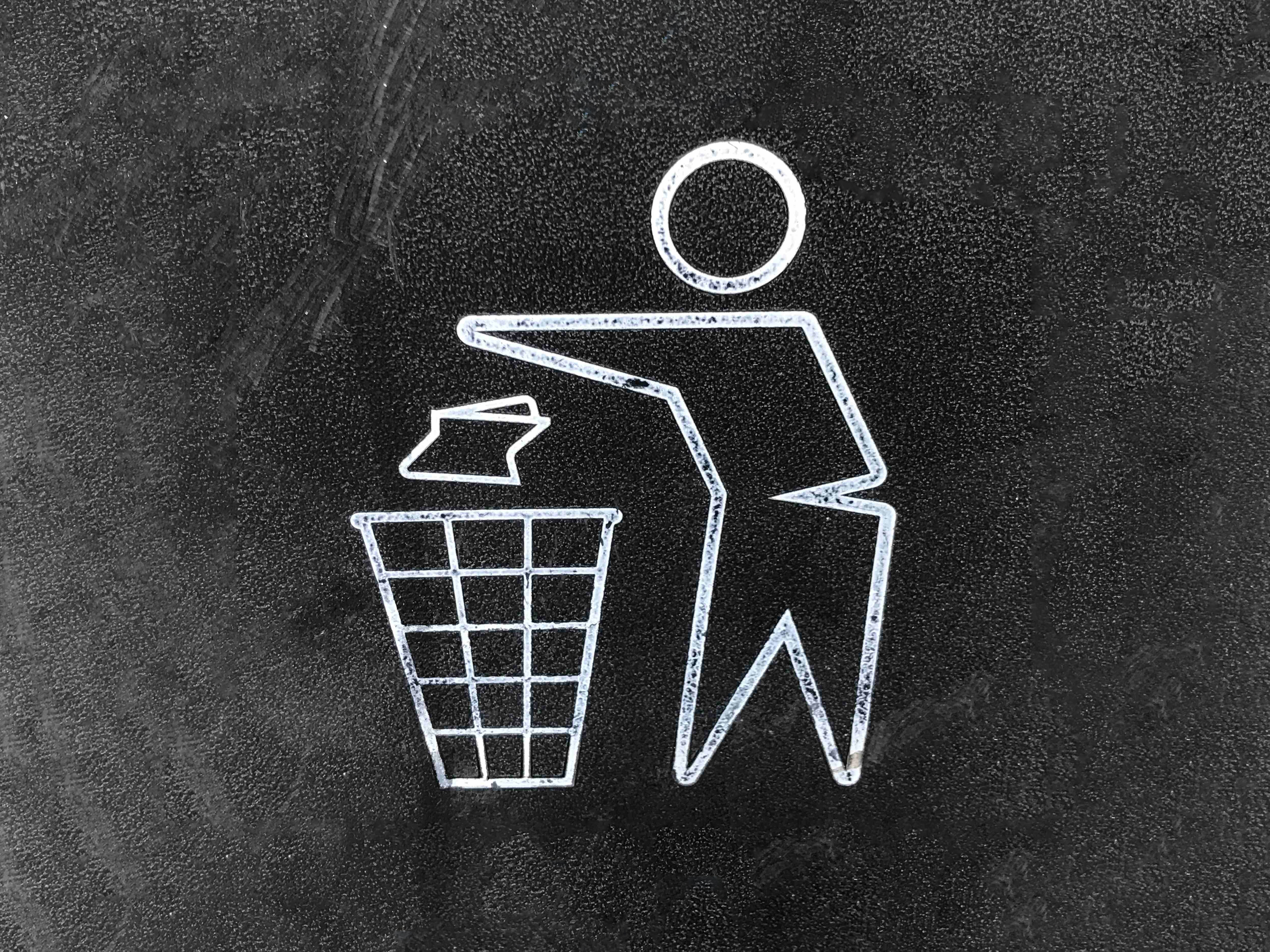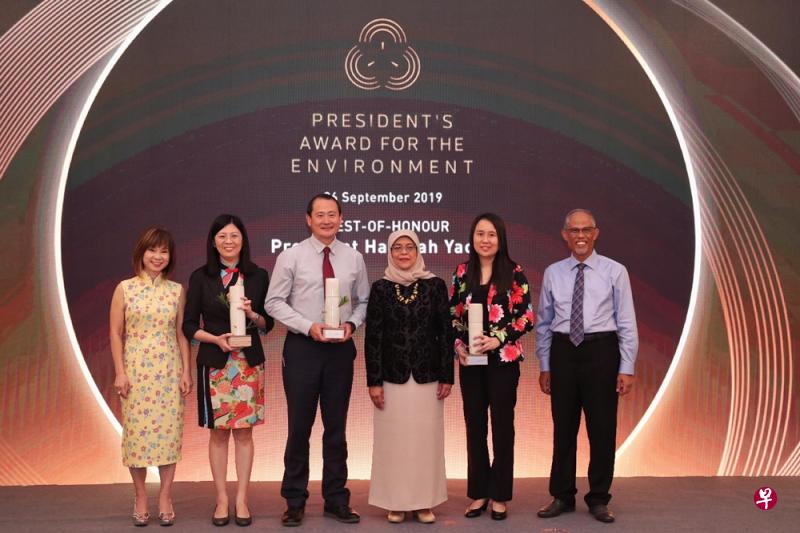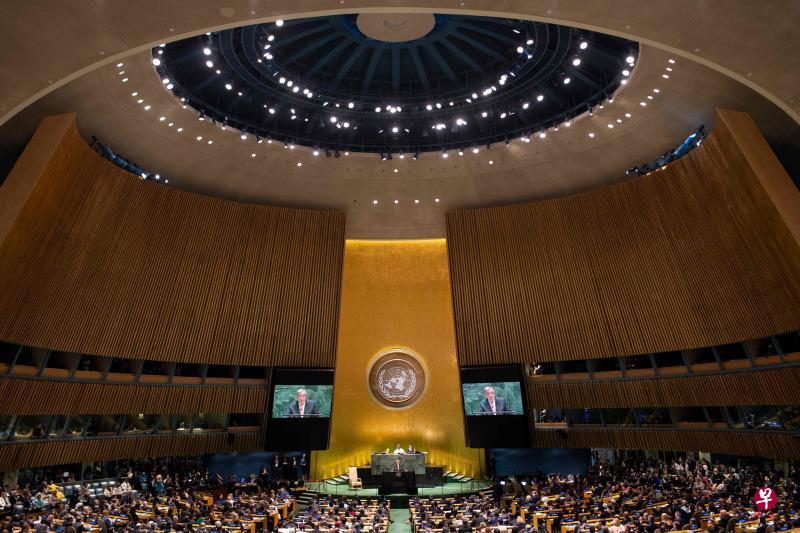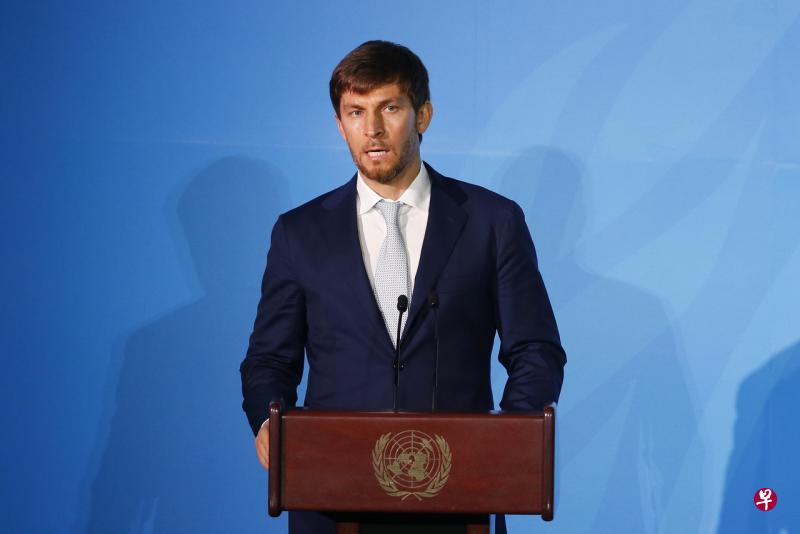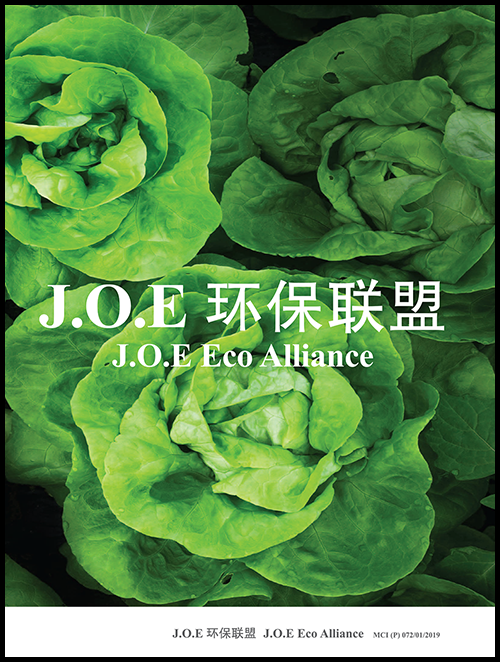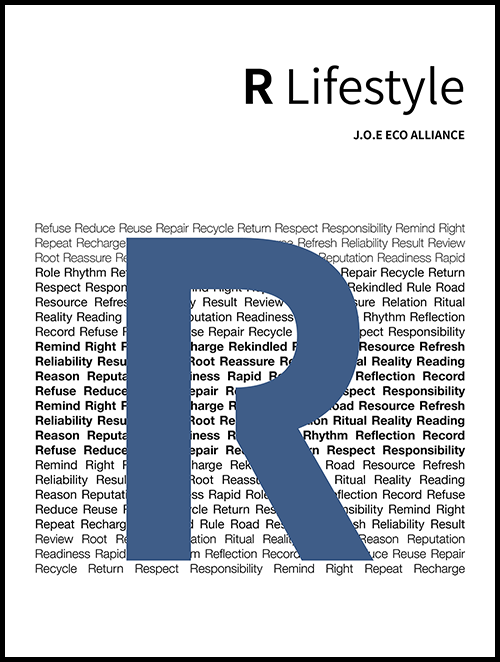燃烧煤炭、石油和天然气等化石燃料产生的空气污染,每年导致约450万人死亡,是死于道路交通意外的三倍多。Air pollution generated from burning fossil fuels is attributed to approximately 4.5 million premature deaths worldwide every year.
Continue reading比2000年76亿吨增3.2倍 全球垃圾量2050年料达320亿吨
据推算,2050年全球一年产生的垃圾总量将达320亿吨,与2000年的76亿吨相比将增加3.2倍。2020年估计为141亿吨。
Continue reading南极两处升到最高气温 Antarctica logs hottest temperature on record with a reading of 18.3C
阿根廷的两个南极考察站分别录得两项自1961年有记录以来南极最高的气温纪录。Argentinian research station logged the hottest temperature in Antarctica since 1961.
Continue reading威尼斯一周内三迎罕见大潮 佛罗伦萨和比萨发布洪水警讯
意大利水乡威尼斯星期天迎来一周内的第三次罕见大潮。与此同时,意大利其他多处地区也豪雨不断,导致佛罗伦萨和比萨发布洪水警讯。
Continue reading疾病及粮食短缺问题将加剧 气候变化威胁全球下一代人健康
专家警告,如果不立即采取行动减少碳排放,气候变化将对全球下一代人的健康构成威胁,现在的孩童未来将在面临粮食短缺、传染性疾病、水灾和极端高温等风险的世界中长大。
由世界卫生组织和世界银行等35个机构组成的联盟“柳叶刀倒计时”(Lancet Countdown)周四(11月14日)发布了年度报告,重点追踪了公共卫生与气候变化之间的联系。
儿童处发育阶段更容易受影响
报告指出,世界各地的儿童目前已经受到空气污染和极端天气等冲击,未来还将面对气候变化对人类健康造成的更严峻风险,包括通过空气传播的疾病、因农作物歉收导致的营养不良,甚至是因洪水和野火等天灾激增而引发的心理和生理创伤。
这个联盟的研究团队汇集了120名专家,领导有关研究的“柳叶刀倒计时”总监沃茨说:“在面对气候变化带来的健康风险时,儿童是最脆弱的。他们的身体和免疫系统仍处于发育阶段,这让他们更容易受疾病和环境污染影响。”
他警告,儿童早期遭受的健康损害是持久且全面的,影响将持续一生。他在伦敦的汇报会上说:“如果全球各国不立即减少温室气体排放,那么人们的身心健康和预期寿命都将受到影响,气候变化将决定一整代所有人的健康。”
专家指出,采取政策限制碳排放和遏制全球暖化将带来完全不同的结果。例如,今天出生的小孩可在六岁时见证英国停止使用燃煤发电,并在31岁时看到全球实现零排放;反之,如果碳排放每年持续上升,地球气温将在本世纪末上升4摄氏度。
过去30年,全球主要作物如玉米、冬小麦和大米的收成都减少了。这意味着婴幼儿出现营养不良的风险提高了,这将导致他们发育迟缓、免疫系统减弱,进而造成长期发育问题。
气温变化也导致传染性疾病增加,而儿童是最容易受感染的。过去30年,造成全球大部分儿童腹泻病例的弧菌(Vibrio bacteria)繁殖和传播的天数增加了一倍;由蚊子传播的疾病如骨痛热症和疟疾也有上升趋势,全球约有一半人口面临感染骨痛热症的风险。
此外,住在城市里的居民也因为空气污染而染病或早逝。2016年,全球估计有100万人因为燃煤发电导致的空气污染而早逝。
该报告指出,随着全球气温上升,出现极端天气的概率将上升,这将更频繁地影响全球的劳动生产力。2018年,因极端高温而损失的劳动时间比2000年增加了450亿小时。
沃茨指出,发达的温带国家应高度关注热浪现象;欧洲今年遭连串热浪席卷,各国温度屡创新高。
他说:“用大气二氧化碳的浓度均值来谈气候变化,对大部分人来说是很难理解。但健康是真实的,我们全都知道这方面的影响是什么。”
另一名撰写人卡尔森指出:“如果我们要保护我们的孩子,就得确保他们吸入的是无毒的空气。”
沃茨郑重提醒:“一个今天出世的小孩如果按全球平均寿命可活到71岁,那就是2090年。也就是说,他会碰上气温升高4度。”
本地明年实现半数组屋装太阳能板 争取10年后满足35万户家庭常年用电需求
陈振声宣布,为朝低碳的可持续未来迈进,我国计划在2030年将太阳能装机容量提高到至少2千兆峰瓦,这一目标相当于当前260兆峰瓦水平的近八倍。
到了明年,全国每两座组屋就有一座会装有太阳能板。我国接下来将大幅扩大太阳能板安装范围,所产生的电量到2030年将能满足约35万户家庭的常年用电需求。

贸工部长陈振声昨天在新加坡国际能源周开幕式上宣布,我国计划在2030年将太阳能装机容量(installed capacity)提高到至少2千兆峰瓦(GigaWatt Peak,简称GWp),朝低碳的可持续未来迈进。
这一目标相当于当前260兆峰瓦水平的近八倍。
本地用来发电的燃料组合中,太阳能仅占总量不到1%,其余高达95%是天然气,以及石油与煤炭等。天然气虽是最清洁的化石燃料,但不是最环保的能源选项,因此把太阳能发电比重到2030年提升至4%,能有效降低我国的碳排放,减轻对气候变化的影响。
陈振声表示,尽管过去10年太阳能板安装数量已从30处增加到超过3000处,我国仍面对土地制约。
组屋、学校、国防等公共建筑以及私人工商建筑的屋顶、未被征用的闲置空地、蓄水池,甚至是岸外水域,都是政府安装太阳能板的范围。当局也探讨在建筑物侧面或是路面装太阳能板的可行性。
南洋理工大学能源研究院执行主任苏博德教授(Subodh Mhaisalkar)受访时表示,对民众而言,使用太阳能的一大好处在于全国的空气质量会得到提升。“如果排放到空气中的温室气体更少,民众也能享受更凉快的天气”。
陈振声认为,要善用太阳能,需要能源储存系统(energy storage solutions)的支持。我国天空多达80%的时间被云层遮盖,使得太阳能面对间歇性电流供应问题。加上每日高峰和非高峰的电力需求差距可达30%,能源储存系统能平衡电力需求,加强能源网韧性。
然而由于气候炎热潮湿,加上造价昂贵,本地能源储存系统采用率很低,据能源市场管理局提供的数据,已安装的存电容易不到1兆瓦(MW),且大部分还在试验阶段。
发展四大“能源开关”
尽管如此,我国仍将坚持增加资源投入研发,力求在2025年之后使用存电量达200兆瓦的能源储存系统。陈振声说,研发一旦成功,除了节省部分基础设施建造成本,“解决方案不仅对新加坡有利,也会惠及新加坡以外的其他国家”。
他展望,如同我国成功谱写属于自己的水源故事,未来50年我国要书写的是能源故事。加大太阳能使用、提高天然气效能、开发跨国电网和投资低碳替代能源是我国接下来的四大电力来源与发展重点。“我们这代人的职责是确保为下一代留下更洁净、更实惠和更可靠的能源故事。”
The Republic is ramping up its drive to soak up more energy from the sun, amid growing global awareness on how fossil fuels are contributing to climate change.
By 2030, Singapore wants to ramp up its solar capacity by more than seven times from current levels, and increase the current 260 megawatt-peak (MWp) of installed solar capacity to 2 gigawatt-peak (GWp).
This is enough to meet the annual power needs of around 350,000 households in Singapore, or about 4 per cent of Singapore’s total electricity demand today.
The new 2GWp target for Singapore was outlined by Minister for Trade and Industry Chan Chun Sing on Tuesday morning (Oct 29) at the opening of the Singapore International Energy Week held at the Sands Expo and Convention Centre.
Solar energy is the most viable renewable energy option for Singapore, but harnessing it to power the nation did not come without obstacles.
Singapore’s small size, the intermittency of sunshine due to cloud cover and urban shading, and cost of solar deployment were some challenges.
Currently, solar energy contributes less than 1 per cent to Singapore’s total energy mix.
More than 95 per cent comes from natural gas, the cleanest form of fossil fuel. Other sources, such as oil and coal, round up the mix.
But just as how Singapore pushed the boundaries on water technologies and thrived, so too will the nation tackle the energy frontier, said Mr Chan.
Singapore does not have any natural sources of water but has overcome the erratic nature of weather-dependent sources of water, such as rainfall, with desalination and by recycling used water.
The next frontier for Singapore, said Mr Chan, is energy.
Singapore started moving on this front since the early 2000s, when it switched from oil to natural gas – a cleaner fuel which Singapore now imports in liquefied forms from all over the world and through pipes from neighbouring Indonesia and Malaysia – to power the nation.
The next step would be to increase the adoption of solar energy here, Mr Chan said.
In the longer term, Singapore could be plugged into a regional power grid to trade electricity with its neighbours, which would increase its energy security, even as the Republic invests in research and development in other low-carbon technologies that, unlike solar energy, have yet to become commercially viable.

his includes research into the possibility of using “green” hydrogen as a fuel, and in carbon capture utilisation and storage technologies – innovations that could suck planet-warming carbon dioxide out of the air and convert it into useful products, such as chemicals and building materials.
MEETING THE TARGET
The Government is looking into a few ways to meet the 2030 solar target, said Mr Chan.
The first is to maximise the deployment of solar panels onto available surfaces, including rooftops, reservoirs, offshore sea space, and on the vertical surfaces of buildings.
Just as Singapore had turned two-thirds of Singapore’s land surface area into a water catchment area, the Republic will look to do the same for solar, he said.
By 2020, one in two HDB rooftops will have solar panels deployed.
Under the recently awarded SolarNova Tender 4 announced earlier this month, solar panels will also be deployed at 30 schools, as well as 13 Ministry of Defence sites.
Industrial developer JTC will also be deploying mobile solar panels and substations on vacant land, such as existing plots on Jurong Island, not required for development in the near future under its SolarLand initiative.
Mr Chan said Singapore will also invest more in research and development into energy storage systems. These essentially function as batteries when hooked up to solar systems, helping to overcome the challenge of intermittent sunshine.
EXPERTS WEIGH IN
Experts approached by The Straits Times said Singapore’s target of having 2GWp of installed solar capacity by 2030 is an ambitious target – but one that was achievable if certain conditions are met.
Professor Subodh Mhaisalkar, executive director for the Energy Research Institute at the Nanyang Technological University (ERI@N), pointed to Singapore’s limited land area and built-up environment, saying solar panels have to be deployed on a larger scale.
He said: “Other than deploying solar panels on Housing Board rooftops, we will need very large contributions from other sources, including residential and industrial buildings, and also deploy solar panels on infrastructure such as walkways and depots, on building facades and on water bodies such as reservoirs and the sea, to name some possibilities,” Prof Subodh told ST.
Another factor to consider is oil and gas prices, said Dr Thomas Reindl, deputy chief executive of the Solar Energy Research Institute of Singapore (Seris) at the National University of Singapore .
“The target seems achievable, as long as oil and gas prices don’t fall well below today’s levels,” he said.
He added: “This is important, as the cost of solar electricity in Singapore competes with conventional electricity. For larger rooftop installations of more than one MWp, the cost of the generated solar electricity is already lower than the typical commercial electricity rates, and in many cases even lower than the wholesale market price.”
While the increase in solar deployment is likely to occur in tandem with an overall increase in energy use, Prof Subodh and Dr Reindl are confident that solar would still be able to contribute about 4 per cent to Singapore’s energy mix by 2030, due to Singapore’s focus on energy efficiency.
Dr Reindl said that while some increase in energy demand would be from population growth, the main impact would come from existing and new industries, and possibly the shift from combustion engines to electric cars in the transport sector.
He added: “In all cases there are already measures or plans underway to proactively manage future electricity demand. Therefore, I am confident that the 4 per cent of total annual electricity demand by 2030 is achievable.”
REDUCING ENERGY USAGE THROUGH DESIGN
Even as Singapore moves to green its fuel mix, the country should also see how its energy usage can be managed, Mr Chan said.
In charting Singapore’s progress toward a future with a sustainable, reliable and affordable supply of energy, Mr Chan said managing energy demand was also important.
“I think we need to see how we can save on our usage of energy,” he said. Key to this is design, he noted, citing the unnecessary cooling of an entire hall to keep its occupants comfortable.
Said Mr Chan: “If you look at a typical audience hall, we just need to cool two meters up from the ground level to provide thermal comfort to the audience. Much of the cooling for the rest of the building is probably unnecessary.”
The importance of design also applies to the broader scale, he said, from the design of individual buildings to clusters of buildings, industries, and residential areas.
For example, technology can be harnessed to determine exactly how much cooling is needed, he said.
And in Singapore, the direction a building faces could have significant impact on its occupants’ energy consumption, not just because of where the sun rises and sets, but also where the wind is coming from, said Mr Chan.
“So how we design the precinct to make full use of the natural ventilation to reduce the cooling needs will be both an opportunity and a challenge,” he added.
Singapore also has the opportunity to refresh the entire island’s infrastructure in the next 50 years, he said, unlike other urban cities which grow as an urban sprawl, randomly and organically.
Efficient design could minimise the energy wasted in transporting people and goods across the island, and get rid of the “tidal effects” of traffic patterns, he said.
This essentially refers to the surge of people travelling in one direction to get to work – usually from north to south and east to west in the mornings – and back home in the other.
Said Mr Chan: “But if we can progressively redesign the entire Singapore, we will get rid of this tidal effect, which will lead to a much more efficient use of our transportation system and network, and certainly the amount of energy that we will need for the entire system.”
But even as Singapore continues to explore new technologies, and build new buildings with zero carbon footprints, the challenge would be to find cost-effective ways of retrofitting existing buildings and precincts and make them energy-efficient, he said.
“That is the area where the Energy Market Authority, together with (industrial developer) JTC, are looking at new capabilities to see how we can help existing… sites convert into much more energy efficient sites.”
Source: Zaobao / The Straits Times
FairPrice customers no longer have to pay plastic bag surcharge at 7 outlets
Customers will no longer have to pay a plastic bag surcharge at the seven FairPrice supermarkets involved in the chain’s month-long “no plastic bag” trial, which ended on Wednesday (Oct 16).
But FairPrice said it was too early to reveal the results of the trial, which also involved a consumer sentiment survey, saying more updates will be available next month.
A spokesman thanked customers for supporting the initiative to reduce the amount of plastic bags taken, and added that the survey findings and consumer feedback will be studied and analysed “to develop a well-informed and sustainable action plan to reduce plastic bag use”.
However, she added: “Customers will not be charged at the seven stores that were involved in the trial upon its conclusion on Wednesday.”
Amid growing global awareness about the excessive use of single-use plastics including plastic bags, FairPrice launched its month-long “no plastic bag” trial on Sept 16 at several of its outlets.
As part of the trial, customers were charged 10 cents or 20 cents for every transaction in which they took plastic bags at seven FairPrice and Cheers outlets.
These were FairPrice Xtra at Hougang One outlet, FairPrice Finest at Zhongshan Park mall, FairPrice at Maple Tree 18 mall, Cheers outlets at Sengkang Community Hospital and in Create Way and Aljunied Road, and FairPrice Xpress in Lorong Chuan.
Shoppers who wanted plastic bags had to pay 20 cents per transaction at the FairPrice, FairPrice Finest and FairPrice Xtra stores, and 10 cents per transaction at the Cheers and FairPrice Xpress stores.
The money was donated to the Singapore Children’s Society and The Straits Times School Pocket Money Fund.
When the trial was first launched, The Straits Times spoke to over 30 customers across several outlets and found that most were supportive of the move to charge for plastic bags.
Shoppers of all ages were seen whipping out foldable reusable bags or taking along trolleys with them on their grocery runs.
However, the reaction on social media was different, with many commentators saying that they would simply throw rubbish down the chute if they were not given plastic bags for free.
Ms Pamela Low of the Singapore Youth for Climate Action environmental group said she commended FairPrice’s willingness to start the trial to charge people for plastic bags “in its efforts to be a responsible retailer contributing to Singapore’s push towards zero-waste”.
Under new zero-waste targets revealed by the Government in August, Singapore wants to send 30 per cent less waste to its only landfill on Semakau Island by 2030.
On comments that plastic bags are needed to bag rubbish, Ms Low agreed, saying: “I use plastic bags for wet trash too and we should still continue to bag our trash to avoid pest issues, given our high-rise infrastructure.”
However, she said that if FairPrice’s trial to reduce plastic bag uptake was successful, the supermarket chain could consider complementing the charge with a rebate scheme, in which customers who do not take bags get discounts on their purchases.
Said Ms Low: “I’m optimistic the trial will prove effective in helping Singaporeans save money and plastic bags.”
Source: The Straits Times
提振经济 应对气候挑战 联合国吁各国携手推行绿色新政
根据联合国的一项报告,由公共部门发挥主导作用的全球绿色新政,可以结束全球金融危机后多年的紧缩和不安全、帮助实现更公平的收入分配,以及扭转数10年来的环境退化。
(日内瓦综合电)联合国指出,全球经济前景备受挑战,预计明年会陷入衰退风险,世界各国有必要重新思考现有经济模式是否足以应付与日俱增的环境压力、不平等现象和发展等挑战,因此,应推行“全球绿色新政”,共同合作提振全球经济及应对气候变化。
联合国贸易和发展会议(UNCTAD)周三发表报告指出,中美贸易关系紧张、国际贸易保护主义抬头、英国可能无协议脱欧等,使全球贸易增长严重减缓,预料全球经济增长将从去年的3%下滑到今年的2.3%,而全球在2020年陷入衰退已是“显而易见的危险”。
UNCTAD全球化及发展战略组负责人柯睿智说,根据现有政策、规则、市场动态和公司实力的结构,全球经济差距扩大和环境恶化的问题只会加剧,因此世界需要全球绿色新政。全球决策者应将重点放在增加就业、工资和公共投资上,并推行这项新政,在促进公共投资的同时避免环境崩溃。
根据UNCTAD的报告,由公共部门发挥主导作用的全球绿色新政,可以结束全球金融危机后多年的紧缩和不安全、帮助实现更公平的收入分配,以及扭转数10年来的环境退化。
全球绿色新政(Global Green New Deal)概念和美国民主党议员此前提出的环保计划类似,部分民主党议员主张通过发展绿色能源来解决社会贫富悬殊问题,倡议美国在10年内停止排放温室气体、百分百使用再生能源等。
报告指出,如果这个政策在全球推行,将有助于遏止气候变化、制造大量就业机会,以及在2030年达到联合国的可持续发展目标,消除贫穷及促进人类福祉。
报告说,如果世界各国每年增加的绿色投资总额占全球总产出的2%或1.7万亿美元(约2.3万亿新元),将可制造至少1.7亿个就业机会,同时让发展中国家实现更“干净”的工业化,以及在2030年达到碳排放量整体减少的目标。
报告指出,尽管这乍听之下须要花费大量资金,但事实上它仅相当于各国政府目前补贴化石燃料支出的三分之一。
对此,柯睿智说:“资源一直都有,我们缺乏的是政治意愿。”
Source: Zaobao
弥陀学校、伊莱雅园小学和新电信 夺总统环境奖
今年的总统环境奖得主是弥陀学校、伊莱雅园小学和新电信。
总统哈莉玛今晚(9月26日)将奖项颁发给三个机构的代表。这是政府肯定个人或团体在环保方面的最高荣誉奖项。
哈莉玛在面簿发贴文指出,为了应付气候变化,我国的应对措施包括建造规模庞大和成本高昂的基础设施。她补充,这些措施可能需要动用储备金支持,因此总统府和财政部正在持续探讨中。
迈入第13年,总统环境奖首次在评估中纳入可量化数据这一标准,提名者可提呈节能、省水和减碳等计划的数据。提名者也被要求提交利益攸关者或伙伴名单,供评判深入了解候选人在可持续方面的表现。
弥陀学校校训“慈良清直”中的“慈”包含对环境的关怀之意,环保理念分阶灌输到小一至小六的学习环境中,从回收可循环物品到构思环保发明,每名学生都有机会参与环保计划。
伊莱雅园小学校园于2017年获颁建设局绿色建筑标志金奖,校方提倡减少用车,超过七成学生以走路、骑脚踏车或公共交通往返学校。食堂摊贩会将多余的食物放入厨余处理机,加入小三学生用果皮制作的堆肥后,能转化为植物肥料。
新电信与新邮政合作展开的最大规模电子垃圾回收计划“ReCYCLE”,从2017年至今已收集到超过2万4000公斤的电子垃圾。
设立总统环境奖的环境及水源部今年共接获30份提名,包含四名个人、12所学府和14个机构。
Source: Zaobao
77国制定目标 2050年前实现零排放
全球至今已经有77个国家制定了要在2050年前实现零排放的长期目标。
联合国气候行动峰会周一在纽约联合国总部举行,很多与会国家提出了应对气候变化方案。联合国秘书长古特雷斯为这个一天峰会做总结时,列出了全球对抗气候变化的“成绩单”。
他说,至今已有77国公布了在2050年前要实现“碳中和”的零排放长期目标,明确了明年全面启动的《巴黎协定》框架下强化对策的方向。其中更有70国誓言要在对抗气候变化方面做得更多,多达100名商界领袖也承诺加入绿色经济,全球三分一的银行(130家)宣誓要确保商业营运方针切合《巴黎协定》和联合国持续发展的目标。
古特雷斯指出,各国就减排提出不同的行动计划,目前有150多个国家采纳以自然为本的解决方案,包括最迟在2030年保存三成的土地与水源,以及保护中非森林及依靠这片森林的6000万人的生计。
他强调,在对抗气候变化的道路上,终于出现了雄心勃勃的目标与具体行动计划。“行动已经在不断的展开,形势已在改变,但我们仍任重道远。”
古特雷斯在峰会之前表示,依靠现有科技实行“技术替代”,能够减少七成全球碳排放量。他呼吁各国停止补贴化石燃料工业和建造煤电厂,转而加大应对气候变化的财政投入,包括向绿色气候基金注资。发达国家也应履行对发展中国家的资助承诺。
在这次峰会上,国家元首、政府首脑和官员、国际金融机构、企业和民间代表等近100人轮流发言。
微软创始人比尔·盖茨周一宣布,他的基金会将与世界银行和一些欧洲国家政府合作,向全球遭气候变迁影响的3亿个小农户,提供7.9亿美元的财政援助。盖茨基金会认捐其中的3.1亿美元。
原本未计划出席峰会的美国总统特朗普在会议闭幕后现身会场,他只短暂停留,没有发言。美国已经退出2015年联合国气候变化大会达成的《巴黎协定》。
瑞典环保少女“炮轰”全球领导人
这次峰会的开幕式值得一提。因发起“气候罢课”而获诺贝尔奖提名的瑞典气候活动小将通贝里(Greta Thunberg)受邀为峰会致开幕词。她发言时毫不客气地“炮轰”全球领导人。
这名16岁环保小先锋激愤地连连直斥“你们竟敢如此”(How dare you),指责领导们未能采取强有力措施应对气候变化。
她说:“一切都错了。我不应该在这里的,我应该在海洋另一端上学……你们竟敢如此。你们用空洞的话语剥夺了我的梦想和童年。”她接着说:“我们处在大规模灭绝的开端,而你们却只会谈钱,……你们太对不起我们了。”
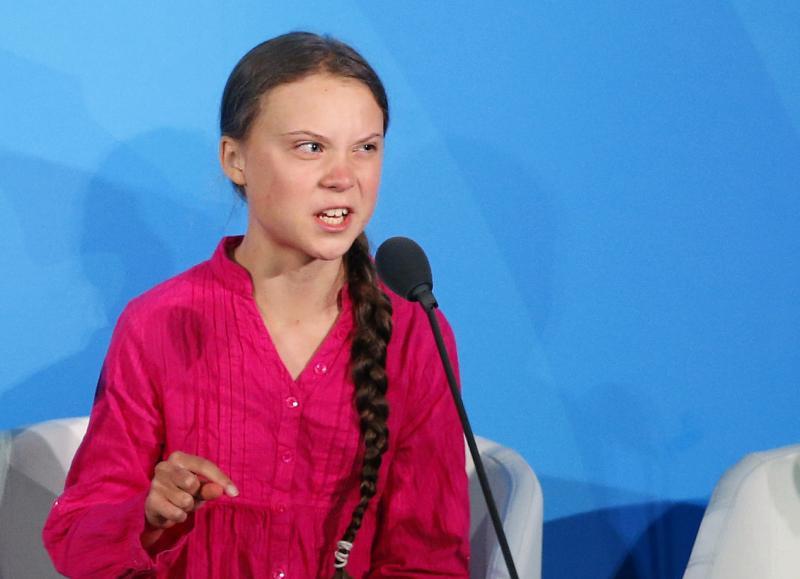
16岁的通贝里为联合国气候行动峰会致开幕词,她激动地直斥全球领袖们坐视地球暖化。
通贝里和15名青年活动者已经向保护儿童的联合国机构提出了正式申诉,称各国政府面对气候暖化却无作为,侵犯了他们的基本权利。
在气候行动峰会召开前夕,世界各地数以百万计的年轻人走上街头示威,要求采取紧急行动拯救地球。
曾指地球暖化是“骗局”的特朗普后来在推特放上通贝里的一段发言视频,还语带讽刺地写道:“她看来像是个非常快乐的小女孩,期盼着光明和美好的未来。看了很开心。”
结果,三小时里有1万6000人反应,大多数都抨击特朗普。其中一人写道:“特朗普针对一个无辜小女孩简直恶心。”
Source: Zaobao
俄罗斯正式加入巴黎气候协定
俄罗斯正式加入巴黎气候协定,承诺在2030年前将排放量减少至1990年的25-30%。
俄罗斯气候会议特使伊德杰里夫周二(9月24日)在出席联合国气候峰会讲话时称,俄罗斯总理梅德韦杰夫已经签署文件,正式加入巴黎气候协定。俄罗斯批准了加入《巴黎协定》的法令后,伊德杰里夫发表讲话称,引入相关法规以遏制排放是合乎逻辑的下一个步骤。
俄罗斯是世界第四大温室气体排放国,因此它对《巴黎协定》的承诺意义重大。
总理梅德韦杰夫表示,温室气体排放引起的气候变化可能使某些关键产业(如农业)处于危险之中,并可能危及俄罗斯三分之二的多年冻土地区人民的安全。
据报道,批准法令设定的目标是将排放量减少至1990年的25-30%,预期在2030年实现。不过近年来俄罗斯的排放量已经比1990年减少了很多。相关数据显示,2017年俄罗斯排放量比1990年减少了32%。这意味着该国有能力有效地控制其排放量,并保证经济的可持续发展。
目前俄罗斯已经开始遭受气候变化的影响。今年夏天西伯利亚发生的大规模野火归因于气候变暖,伊尔库次克(Irkutsk)和西伯利亚的洪灾也是如此。
Source: Zaobao
专家指印尼当前霾害堪比2015年危机 联合国:威胁近千万孩童健康
欧洲科学家指出,印度尼西亚近两个月来的林火所排出的温室气体足以与2015年霾害危机时期相比。联合国警告,印尼林火霾害引起的空气污染危害近千万孩童的健康。
据欧盟地球观测计划的哥白尼大气监测服务表示,今年印尼林火所释放的二氧化碳与2015年的20年来最严重霾害时期,几乎一样多。从8月初至9月18日,林火释放大约360兆吨的温室气体,四年前同一时期则是400兆吨(1兆吨等于100万吨)。
与美经济活动相比 2015年霾害温室气体更高
环保组织世界资源研究所曾指出,2015年霾害巅峰时期,印尼林火每天释放的温室气体比全美国经济活动所排出的温室气体总量还要高。
印尼这几周林火肆虐,所引发的有毒烟霾迫使机场关闭,学校停课,口罩销量红火,因呼吸道疾病而求医者大增。印尼政府已出动数万名人员投入灭火工作,也利用直升机从空中洒水。印尼农民和种植园习惯以烧芭开垦林地,林火年年发生,但今年遇上干旱,助长了火势的延烧,霾害情况是自2015年以来最严重的。
联合国儿童基金会指出,印尼苏门答腊岛及婆罗洲受林火影响较为严重的地区住了将近1000万个18岁以下的孩童和少年,其中约四分之一不满五岁。幼童的免疫系统发育还不成熟,体质较为脆弱,因烟霾而受到的健康威胁最大;在怀孕期间吸入污染空气的孕妇可能早产,而产下的婴儿也可能体重过轻。
联合国儿童基金会人员柯米尼说:“空气素质低是印尼面对的一个严峻且持续扩大的挑战……每年数以百万计的孩童吸入有毒空气,威胁他们的健康,导致他们生病无法上学,对体格和认知能力造成终身性的损害。”
印尼已有数千所学校被迫停课,烟霾也飘到邻国马来西亚,导致当地部分学校上周也开始停课,而新加坡也受到波及,上周末举行的F1赛车在雾霾中举行。所幸新马两国的烟霾情况昨天出现好转。
从亚马逊到澳大利亚,全球近期发生了一系列林火,令科学家越来越担心其对全球气候变暖可能产生的冲击。
马国烟霾继续大幅改善
印尼邻国马来西亚的烟霾情况则继续大幅改善,全国昨天都没有任何地区的空气污染指数突破200点的非常不健康水平。截至昨天晚上9时,全国只有三个地区破百点的不健康水平,这包括霹雳的红土坎(116点)、雪兰莪的巴生(107点)与佐汉斯迪亚(158点)。其他地区全天的空污指数都是中等水平。
东马之前烟霾情况最严重的砂拉越古晋、三马拉汉与斯里阿曼等地,空污指数也从上周超过250点,降至昨晚的64点至82点。
教育部前晚宣布,由于烟霾情况好转,全国所有学校昨天都恢复上课,全国已经没有任何学校因烟霾而停课。气象局上周末(21日)表示,风向本周开始转变将明显改善烟霾情况。
Source: Zaobao


